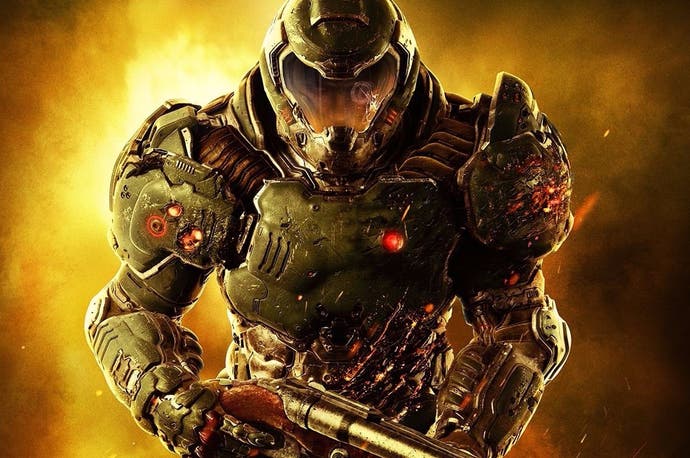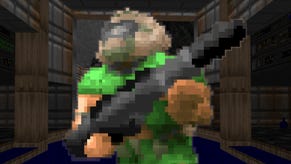Does Switch's new Doom patch improve performance?
And what about boosts to image quality?
We like the Switch version of the Doom 2016. We respect its remarkable technological achievements and we're blown away by the fact that a playable version of this game exists at all for Nintendo's hybrid machine, but the fact is that the game has issues. The drop from 60fps to half-refresh was inevitable, but the impact to resolution and wobbly performance detracted significantly from the overall experience. Last week, developer Panic Button released a patch for the title and to say that people were excited about its potential would be a vast understatement - our social media was awash with demands to re-test the title, with many believing they were seeing some profound improvements in the revised code.
But what has actually been delivered? The patch notes suggest that developer Panic Button has 'increased the average resolution in lower-res areas of the game', which is a welcome upgrade. In shoehorning a modern game engine onto a mobile chipset, Doom's pixel-count is highly variable. Like for like comparisons in the most intense scenes aren't really possible, but we found some interesting data points nonetheless. Outside of combat, we actually found pixel-counts before higher and lower than the original release we tested, but in more challenging scenes, the game does appear to hit 720p while docked more often in situations where you might expect drops. However, drops to 648p are commonplace. In actual fact, Doom seems to scale both horizontal and vertical axes - it's a truly dynamic experience.
The point here is that while there is a difference, the perceptual effect is not significant - it's improved but it's still a very blurry game overall. It's even more difficult to determine in handheld mode but pixel counts do not suggest a transformative boost here. But that's not really the whole story. The fact is that this new patch does improve the experience and it's all about improved performance.
Stress-testing Doom on Switch is simple - just dip into arcade mode and select the nightmare difficulty. In our original tests, this could see performance drop below 20fps in intense scenes, but re-testing with the new patch sees a definite uplift in frame-rates. 23fps was the lowest we recorded but by and large, it stays north of 25fps. This may well be down to the CPU optimisations described in the patch notes - fundamentally, running idtech 6 on a mobile chipset is going to cause bottlenecks in all areas, and Switch developers only have access to three ARM Cortex A57 cores running at just 1020MHz.
As you might expect, the improvements that have been delivered in this new update aren't exactly a night and day leap over the launch code, but it's a noticeable improvement and a welcome boost overall. Across the run of play, what was originally a 25.6fps average now rises to 27.6fps - but it's the jump in the lowest frame-rates that you'll actually feel. The worst dips aren't quite as bad now, and that can only be a good thing. The downside is that the bad 30fps frame-pacing issues we previously reported haven't been improved - it's still rather distracting.
So, what's the takeaway from this new patch? Image quality remains much the same but a genuine attempt has been made here to address Doom's worst performance issues and if you're playing on the less taxing normal difficult mode, the frame-rate holds much closer to 30fps throughout the run of play, especially in less demanding scenes. This testing did reveal one other issue - the audio mix. Doom still doesn't sound quite right. Everything sounds more compressed and flat than the original version. It's an odd thing but it did stick out especially, when pumping the game through a powerful sound system.
Of course, improvements in the new patch aren't just limited to performance and image quality. A key new feature is gyro-based aiming. It's now possible to enable this feature, allowing you to simply move your controller around to dial in your shots. While Doom doesn't require tons of precision, it does help line up distant shots with the more accurate weapons. It really works well. However, one downside to using gyro aiming is the impact it has on fluidity of the experience. Unless your hands are perfectly still, the camera 'bounces' around slightly during gameplay, which robs the game of its fluid movement. It's a rather like watching someone play a VR game in that sense, as it directly translates your hand motion to the screen. We like the feature but others may not be so keen.
Regardless, it's a nice addition to what is a solid enough title update, overall. Don't go in expecting a game-changing improvement to the game overall. Performance is still somewhat wobbly, and it's still very blurry in places. What you get instead is an iterative improvement, but most definitely a welcome one.


















